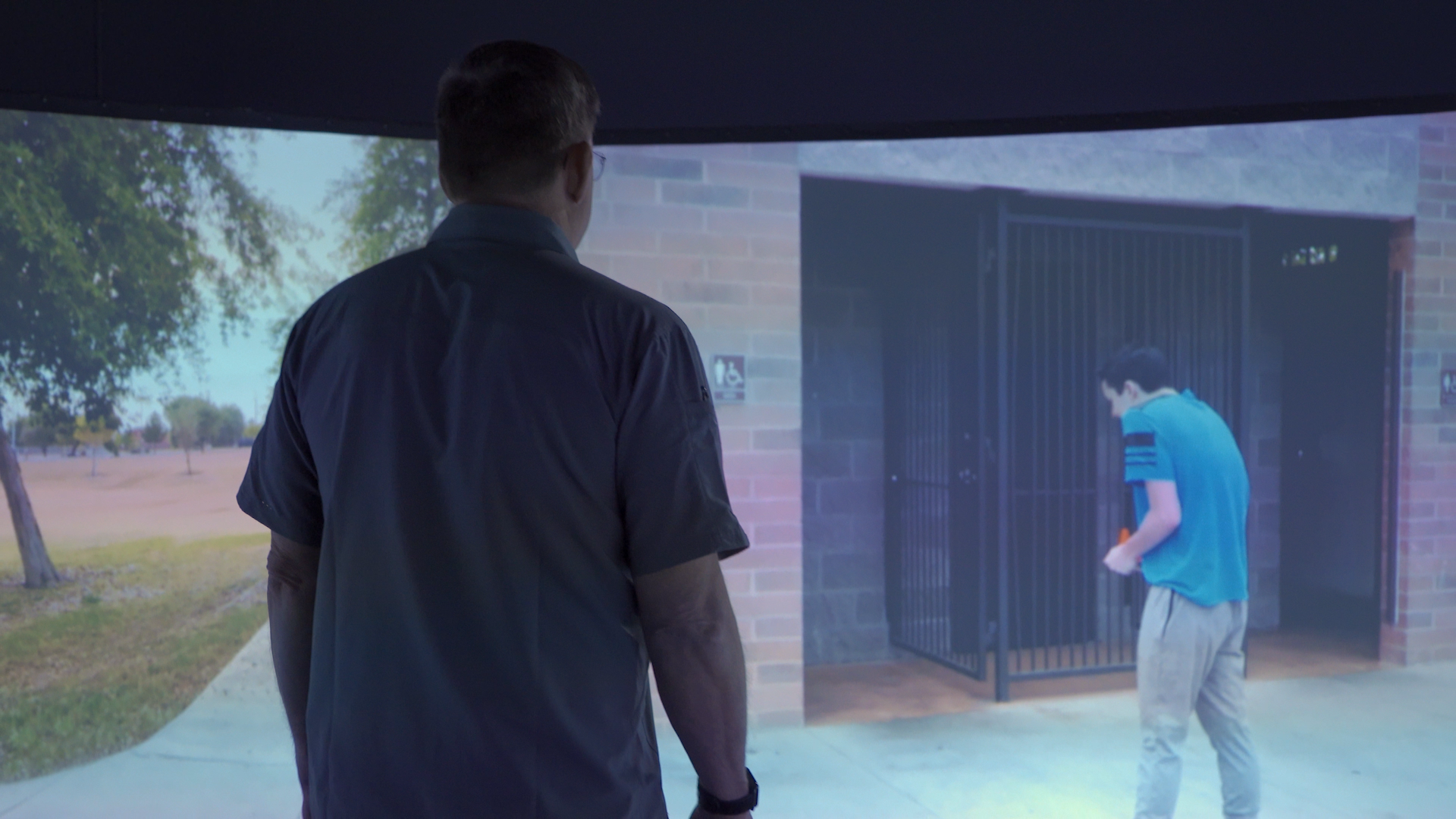New V-VICTA™ Autism Awareness Curriculum
One of the biggest challenges for law enforcement is distinguishing Autistic behavior from those that mimic other behaviors they might come across, including indicators for drug or alcohol use and deceptive behavior. That's why we partnered with the experts at SARRC - Southwest Autism Research & Resource Center - to bring the Autism Awareness Curriculum to our Law Enforcement customers.
Estimates suggest that 50,000 teens with ASD transition into adulthood each year. This is why VirTra is addressing autism in its latest V-VICTA™ —VirTra – Virtual Interactive Coursework Training Academy— curriculum launch due to the difficulties law enforcement face when encountering people who may be on the autism spectrum.
What are people saying?
“I just fell in love with it. VirTra is forward-looking. It’s not just shoot/don’t shoot. Now, they’re offering scenarios and more training, so you get this auditory or visual learning from watching it, but then you get that kinesthetic learning from actually practicing what you just learned, which actually is proven to hold in your mind longer.” - Chief Muma, Jerome, AZ PD
“While advances in software and realistic simulations are wonderful training tools for any discipline, you cannot rely on the technology alone to provide effective training. VirTra provides the customer with a behavioral pedagogy, pairing behavior-based curriculums with cutting edge technology. This ensures customers are getting the most out of their investment!” - Dayna L. Beddick, Ed.S, BCBA Associate Director, University of West Florida at Argovillage, Center for Behavior Analysis

What is Autism?
Autism is a developmental disorder that is characterized by challenges with social skills and communication, the presence of restricted and repetitive behaviors, as well as by unique strengths and differences.
According to the CDC, 1 in 54 children are identified as being on the Autism spectrum. It is four times more common in boys than girls. Autism has no racial boundaries and can occur in all ethnic groups.

There is still much more to learn. If you would like some more stats, research, and details, then fill out the form and we will be in touch!
Why is it important for law enforcement to understand Autism?
If officers don’t understand how to recognize behaviors like stimming, it’s easy to interpret them as something else, such as drug use or aggressive movements that may pose a potential risk for the officer. Rather than a threat, however, many of these behaviors are simply signs of a communication barrier or cognitive difference. It’s a situation with excess and deficits, meaning that you may have excessive movements, speech or behaviors, but you also have deficits in communication, learning, attention and other aspects. Being able to recognize some of those excesses or deficits, maybe this is somebody that’s on the spectrum, then my communication strategies can go from there.

What makes it difficult for law enforcement to interact with someone on the spectrum?
One of the biggest challenges for law enforcement is distinguishing Autistic behavior from those that mimic other behaviors they might come across, including indicators for drug or alcohol use and deceptive behavior. Someone on the spectrum may display repeated behavior patterns such as hand flapping or avoid eye contact.
People diagnosed with Autism communicate differently. They may interpret words and phrases literally or have trouble grasping social cues. Some may be entirely nonverbal and use writing or gestures to communicate.

Does VirTra use actors on the spectrum when filming virtual scenarios?
Yes - and the only training company to do so. Each scenario in the Autism curriculum involves an actual child or adult on the autism spectrum. We believe this is the only way to accurately and respectfully educate officers about the spectrum, fully immersing officers and recruits are in a realistic environment.

